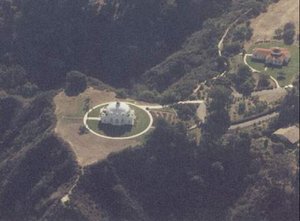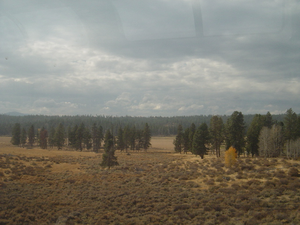Landscape
2007 Schools Wikipedia Selection. Related subjects: Geology and geophysics
A landscape comprises the visible features of an area of land, including physical elements such as landforms, living elements of flora and fauna, abstract elements such as lighting and weather conditions, and human elements, for instance human activity or the built environment. Landscape can also mean the objects around you in a building. Example; "I went to the mall, because I heard that the landscape there is wonderful" or "I love the landscape of this house".
Etymology
The word landscape is from the Dutch word landschap, from land (land, patch, area) and the suffix -schap, corresponding to the English suffix "-ship". Landscape, first recorded in 1598, was borrowed as a painters' term from Dutch during the 16th century, when Dutch artists were on the verge of becoming masters of the landscape genre. The Dutch word landschap had earlier meant simply “region, tract of land” but had acquired the artistic sense, which it brought over into English, of “a picture depicting scenery on land.” 34 years pass after the first recorded use of landscape in English before the word is used of a view or vista of natural scenery. This delay suggests that people were first introduced to landscapes in paintings and then saw landscapes in real life. A landscape is wide space in the world that show what is around in the world.
Uses
Specific uses of landscape include:

- Landscape art is the depiction of scenery in landscape painting, landscape photography or other media.
- Landscape architecture is the art of planning, designing, and managing public and private landscapes and gardens. Related terms include:
- Landscape design is the design of open space urban or rural areas
- Landscape engineering is the technical aspect of landscape architecture
- Landscape planning is the planning of large scale and/or long term landscape development projects
- Landscape management is the care of human-made or natural landscapes
- Landscape gardening is the practice of designing large scale estate gardens, and is usually applied to the 18th and 19th centuries, and seen as a precursor to landscape architecture.
- Landscape ecology is a subdiscipline of ecology that investigates the ecological causes and consequences of spatial pattern, process and change in landscapes.
- In anthropological terms, landscape refers to the material manifestation of the relations between humans and their environments. It is a product of the dialectic of biophysical environments and culture.
- Landscape orientation of a rectangular page, painting or other graphic means that the longer axis is horizontal. (So named because landscape paintings usually have this orientation.) When the long axis is vertical, it is called portrait orientation.
- Landscape is a play by Harold Pinter
- Landscape was a British jazz-funk-synthpop band, active in the 1970s and 80s.
- Anthropic landscape is a concept in string theory.
- Cultural landscapes are "combined works of nature and of man." They are illustrative of the evolution of human society and settlement over time, under the influence of the physical constraints and/or opportunities presented by their natural environment and of successive social, economic and cultural forces, both external and internal .
In some nordic countries a landskap, translated as landscape, is or was an administrative unit:
- Landscapes of Norway
- Landscapes of Sweden (provinces)
